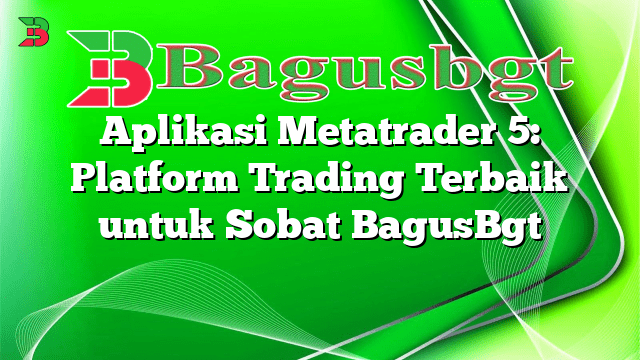Hello and welcome to this comprehensive article on the basics of forex trading. In this guide, we will walk you through the fundamental knowledge and concepts you need to understand in order to embark on your journey as a forex trader. Whether you are a beginner or have some experience in trading, this article will provide you with valuable insights into the world of forex trading.
1. What is Forex Trading?
Forex trading, also known as foreign exchange trading, is the process of buying and selling currencies with the aim of making a profit. It is the largest and most liquid financial market in the world, with an average daily trading volume exceeding $5 trillion. Forex trading is conducted electronically over-the-counter (OTC), meaning that trades are executed through a decentralized network of banks, financial institutions, and individual traders.
Advantages of Forex Trading
| Advantages | Explanation |
|---|---|
| 24-Hour Market | Unlike other financial markets, forex operates 24 hours a day, five days a week, allowing traders to participate at any time. |
| High Liquidity | With a high trading volume, forex offers better liquidity compared to other markets, ensuring that positions can be entered and exited easily. |
| Low Transaction Costs | Forex brokers typically charge lower transaction costs compared to other financial markets, making it more cost-effective for traders. |
| Leverage | Forex trading allows traders to utilize leverage, which enables them to control a larger position with a smaller amount of capital. |
Disadvantages of Forex Trading
While forex trading offers numerous advantages, it is essential to consider the potential drawbacks:
- High Volatility: The forex market can be highly volatile, leading to rapid price fluctuations.
- Risk of Loss: Trading forex involves the risk of substantial financial loss if not properly managed.
- Complexity: Understanding the forex market requires acquiring knowledge of various economic and geopolitical factors.
2. Currency Pairs
In forex trading, currencies are always traded in pairs. The first currency in the pair is called the base currency, while the second currency is the quote currency. The exchange rate between the two currencies determines how much of the quote currency is needed to purchase one unit of the base currency. The most commonly traded currency pairs include EUR/USD, GBP/USD, and USD/JPY.
3. Bid and Ask Price
The bid price represents the highest price at which a trader is willing to sell a currency, while the ask price is the lowest price at which a trader is willing to buy a currency. The difference between the two prices is known as the spread, which is essentially the transaction cost of the trade.
4. Pips and Lots
Pips are the smallest unit of price movement in forex trading. They represent the fourth decimal place in most currency pairs. A lot refers to the standardized quantity of a currency that is traded, with a standard lot size consisting of 100,000 units. Traders can also trade in mini lots (10,000 units) or micro lots (1,000 units).
5. Long and Short Positions
When trading forex, a long position refers to buying a currency pair with the expectation that its value will rise. In contrast, a short position involves selling a currency pair with the anticipation that its value will decline. Profits are made by buying low and selling high or selling high and buying back at a lower price.
6. Fundamental and Technical Analysis
Fundamental analysis involves evaluating economic indicators, such as GDP, inflation rates, and interest rates, to assess the overall health of a country’s economy and its currency. On the other hand, technical analysis relies on charts and indicators to identify patterns and trends in price movements.
7. Risk Management
Effective risk management is crucial in forex trading to protect your capital from significant losses. This includes setting stop-loss orders, implementing proper position sizing techniques, and diversifying your portfolio to mitigate potential risks.
8. Forex Trading Strategies
There are various trading strategies employed by forex traders, including scalping, day trading, swing trading, and position trading. Each strategy has its own characteristics and timeframes, catering to different trading styles and preferences.
9. Forex Brokers
Forex brokers act as intermediaries between traders and the forex market. They provide trading platforms, access to liquidity, and various tools and resources to assist traders in executing their trades. Choosing a reliable and reputable forex broker is essential for a smooth trading experience.
10. Forex Trading Education
Continuous learning and education are vital for success in forex trading. There are numerous online resources, courses, webinars, and forums available to enhance your understanding of forex trading strategies, analysis techniques, and risk management.
Conclusion
In conclusion, understanding the basics of forex trading is essential before venturing into the exciting world of currency trading. By grasping the concepts explained in this article, you are equipped with the foundational knowledge needed to make informed trading decisions. Remember to practice and hone your skills through demo accounts before trading with real money. Happy trading!
Frequently Asked Questions (FAQ)
Q: Can I start forex trading with a small amount of capital?
A: Yes, forex trading allows traders to start with a small amount of capital due to the availability of leverage. However, it is important to exercise caution and manage risks effectively.
Q: How do I choose a forex broker?
A: When selecting a forex broker, consider factors such as regulatory compliance, trading platforms, customer support, spreads, commissions, and available trading instruments.
Q: Is forex trading suitable for beginners?
A: Yes, forex trading can be suitable for beginners. However, it is advisable to educate yourself, practice on demo accounts, and start with smaller position sizes until you gain confidence and experience.
 Bagus Banget Kumpulan Informasi terbaru dari berbagai sumber yang terpercaya
Bagus Banget Kumpulan Informasi terbaru dari berbagai sumber yang terpercaya




